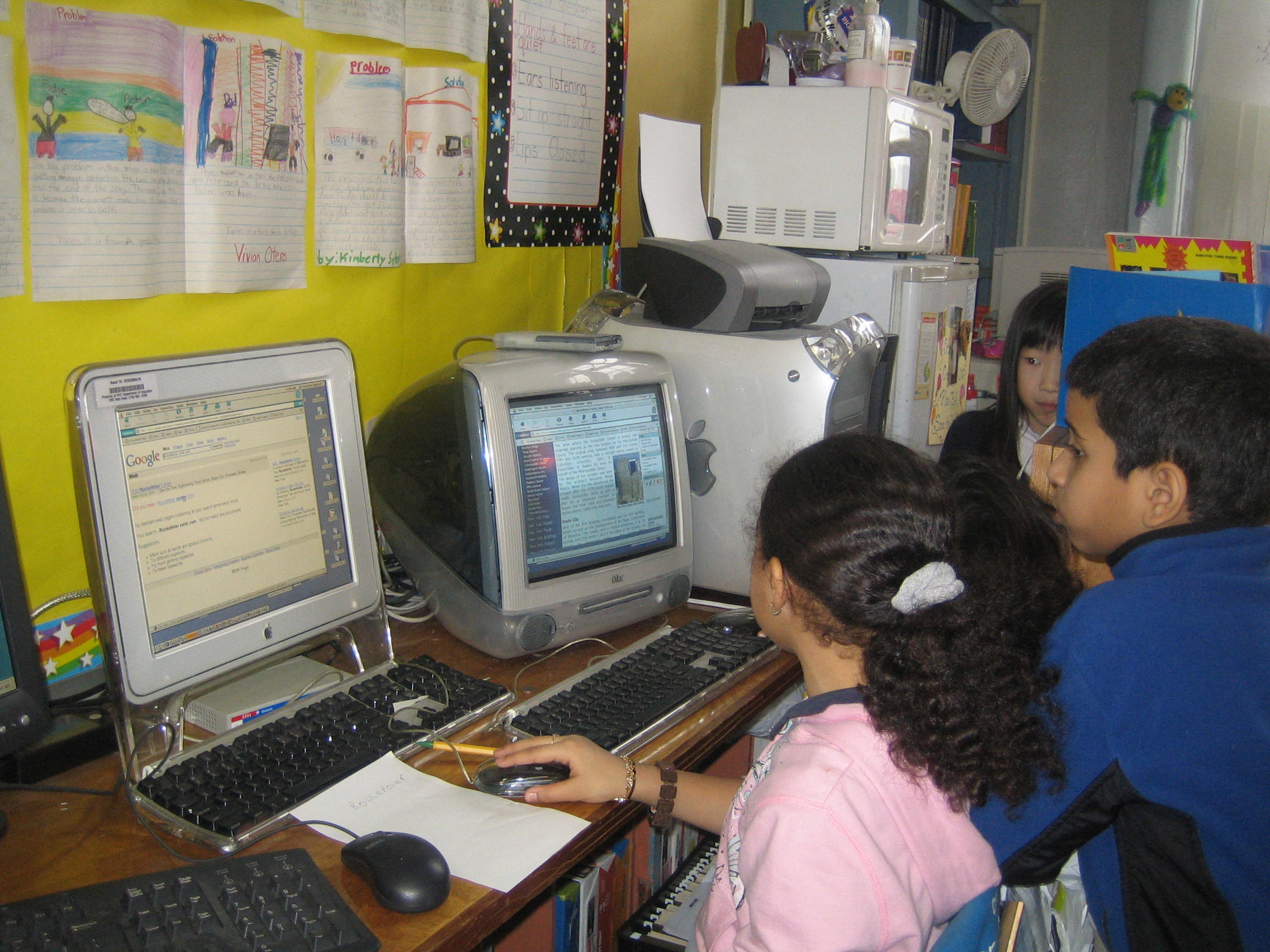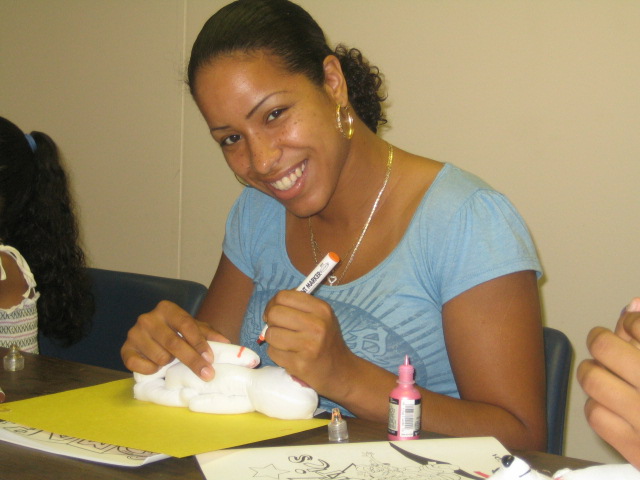 Subject: Social Studies Subject: Social Studies
Grade Level: Third
Materials: Internet-ready computers, chart paper, markers, glue, pictures of places, various-size boxes, tape, and large pieces of cardboard
About: Students learn about various places in New York City.
Students create small replicas of the places in New York City that they studied.
The students gain knowledge on the Internet and the different types of information they can find, such as text and images. Students will be able to apply this knowledge to all academic areas and future research projects.
Make sure that the boxes used are not too large or else it gets difficult make a replica small enough to store. Students can use toothpaste and macaroni boxes, which can easily be cut down to different sizes.
| Students effectively research using various types of information on the Internet. |
| Students identify many places in the city in which they live. |
| Students work cooperatively in groups. |
| Students give an oral presentation about what they have learned. |
| Students complete a KWL chart. |
|
|
|
|
|
| Students read and comprehend informational text. |
| 3rd grade |
| ELA |
| Students participate in group meetings. |
| Grade 3 |
| English Language Arts |
| Students understand and follow directions, both written and oral. |
| Grade 3 |
| English Language Arts |
| Students know how to select reference materials independently. |
|
|
|
|
|
|
|
|
|
|
|
|
|
|
|
|
|
|
|
|
|
|
|
|
|
|
|
| Day 1: Brainstorming our topic |
| Students work cooperatively in groups. |
| Students complete a KWL chart. |
|
|
|
|
| Chart paper for recording student responses |
| Markers |
| Paper for groups to record their brainstorms on |
|
|
| The teacher asks, "What are some busy places in New York City?" and collects responses on a large chart paper. The class discusses the answers. |
| Explain to children that they will be investigating why these places in New York City are so busy and what can be found there. Explain that they will create replicas once they finish their investigations. |
| Students are broken into groups and assigned particular places to study such as a 14th Street, a 34th Street, and a Greenwich Village group. |
| Groups are instructed to create a KWL chart for their place listing everything they know and want to know. For the want-to-know section, they should brainstorm a list of questions such as "What businesses are there?", "Are there parks there?", etc. |
| At the end, the students share their charts with the class. |
|
|
|
|
|
|
| Talk to your parents about your area and see what information they can tell you about it. |
|
| Students are assessed by listening to their presentation and watching how they work in the groups. |
|
| Day 2: Beginning our research |
| Students research their topic using the Internet. |
|
|
|
|
|
| Brainstorms from the previous day |
| Chart paper |
| Markers |
| Internet-ready computers |
|
| Students take out their brainstorms from the previous day. |
| The teacher instruct students to spend some time on the Internet looking for information on the places they wrote about on their brainstorm. Remind students that the end goal is to find places they can replicate. |
| Students get on their computers and begin searching. |
| Students share what they found with the class during a group share. |
| As a class, create a chart listing all the places students have found. |
|
|
|
|
|
|
| Students use the Internet to find photos. |
|
|
|
|
|
| Internet-ready computers |
| Individual folders for students |
|
|
|
| Explain to students that now that they have found the places they are going to use, they also need to find pictures of these places. |
| Conduct a mini-lesson showing students how to do a photo search. They need to go to http://google.com, click on images, and type in the name of the place. |
| Send students to computers to find their images. |
| After students print their images, have them put them into their individual folders. |
|
|
|
|
|
|
|
| Check to see if stdents are able to find the photos they needed. |
|
| Day 4: Constructing a replica |
| Students work cooperatively in groups. |
| Students use their information to create a replica of their place. |
|
|
|
|
| Varoius-size boxes |
| An empty map with boxes that represent city blocks. Boxes can be drawn on an oversized paper. Make sure the boxes are big enough to fit the buildings the students are replicating. |
| Glue, makers, tape |
| Pictures and information they researched on the Internet |
|
| Expalin to students that they will be creating their replicas. They begin by pasting their pictures onto the boxes. If they are missing a picture, they can draw it onto the box as long as they have their research for it. |
| One group of students work on labeling the map with street names. |
| Once students finish preparing their boxes, they take them to the map and tape them into the proper places. |
| The teacher goes around the room, helping students with their projects. |
|
|
|
|
|
|
|
| Students must be ready to present their projects the following day. |
|
| Students give an oral presentation. |
|
|
|
|
|
| Students take turns presenting their portion of New York City to the class. |
|
|
|
|
|
|
|
|
|
|
| Check to see if students have learned all the objectives based on oral presentations. |
|
|

Irene Velazquez
irene.velazquez@verizon.net
PS 110
285 Delancey Street
New York, NY 10002
Irene Velazquez is a third grade teacher in New York City. She has been teaching for the past 6 1/2 years. She has taught grades 3,4, and 6. Her classes have consistently performed at or above grade level in ELA and Mathematics. Irene is currently pursuing a Masters in School Administration and Supervision. |